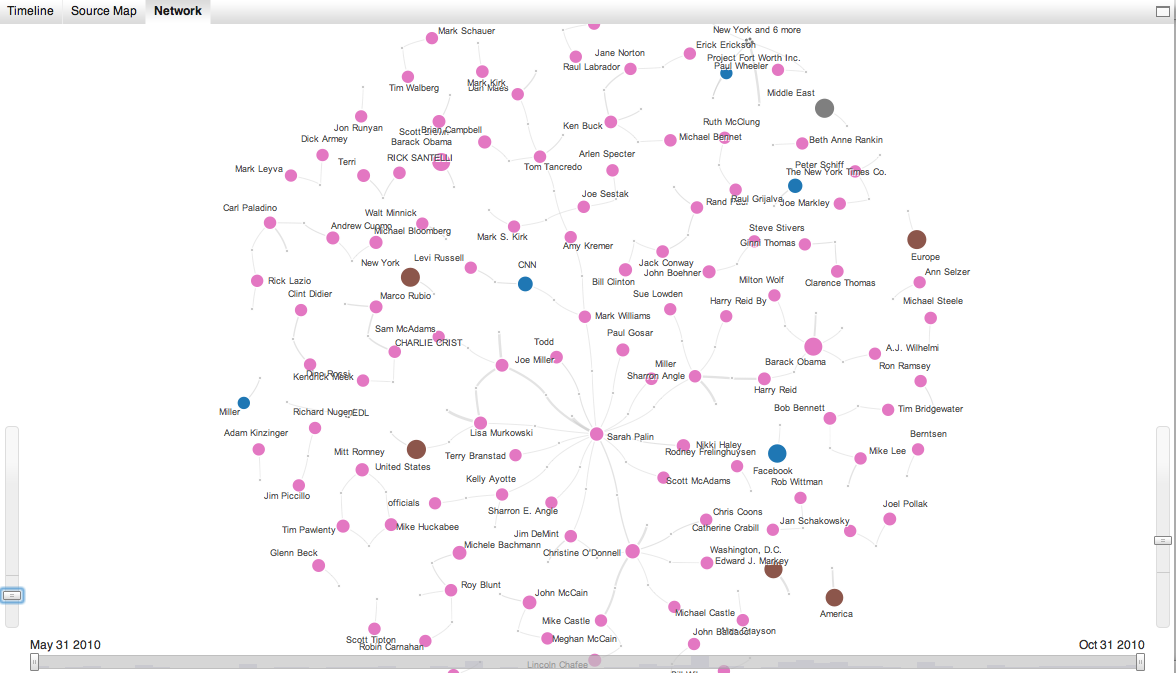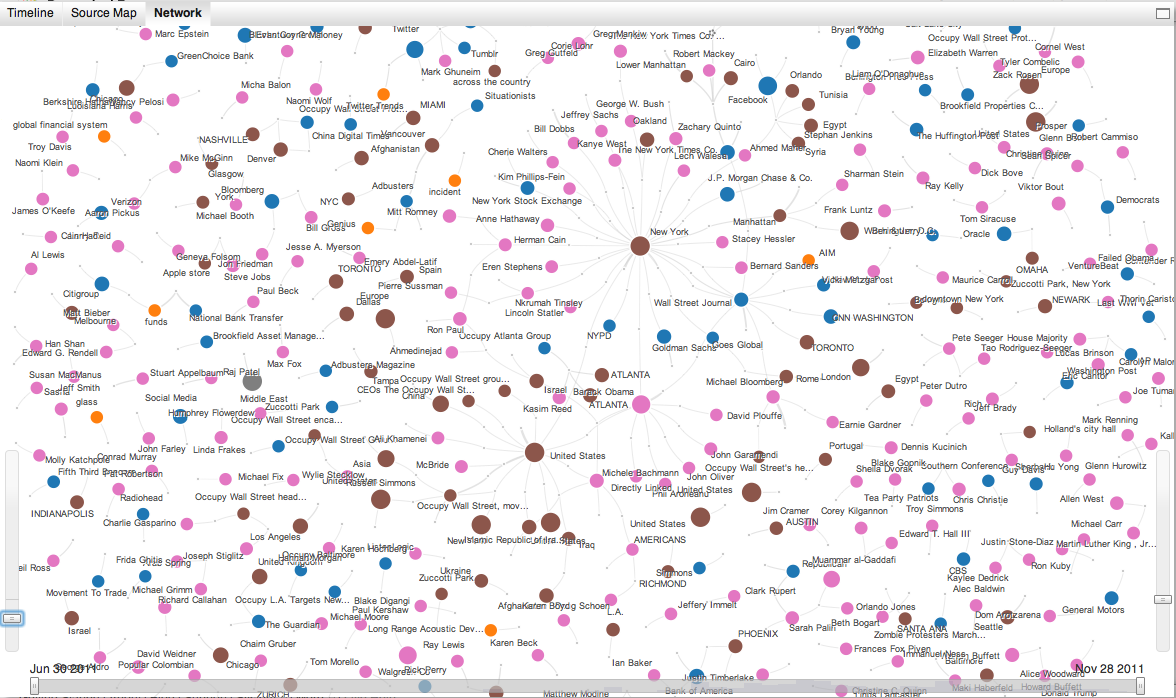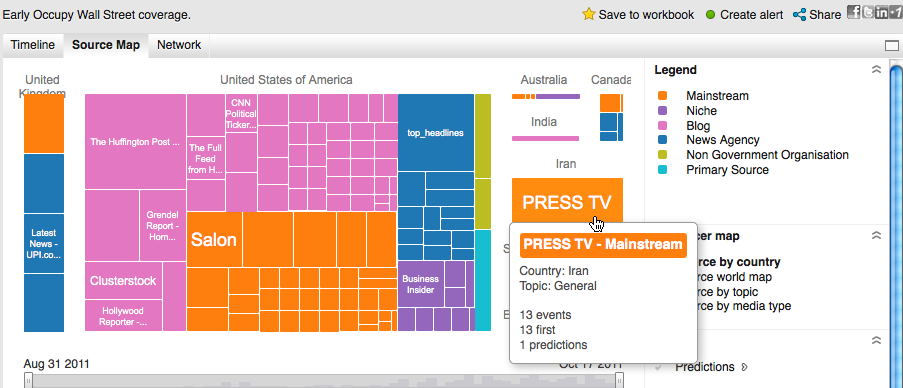
New Scientist's One Per Cent blog recently presented findings from Marc Smith of the Social Media Research Foundation comparing the social networks, derived from Twitter connections, for Occupy Wall Street and the Tea Party. Smith's findings suggest that communication about the Tea Party is insular and driven by a tightly knit group while discussion of OWS is more chaotic and absent of leadership. I'd like to examine these ideas through the broader lens of online media and expand the set of sample data from a single day to content published over several months.
To do so, I'll use the Recorded Future index examine the entities (people, places, companies, etc) mentioned in conjunction with the Tea Party from June 2010 through the end of October of 2010, directly in the lead up to the 2010 mid-term elections, and then compare to online coverage for the first few months of Occupy Wall Street's existence. The results show that the two movements are represented online in dramatically different ways [click on graphs to jump to enlarged versions].
First, the Tea Party network of related entities:
Before making any judgments on what's being shown, let's get to the comparative visual for Occupy Wall Street derived from content published between July 2011, when Adbusters initially called for action, through the end of November 2011:
- The Tea Party movement during this period from June 2010 through October 2010, at least as described through online media, was dominated by political actors. Note the nodes around Sarah Palin, Christine O'Donnell, Tom Tancredo, and others. There are a handful of Tea Party activists mentioned, but the political figures are most prominently represented.
- The OWS network is significantly more diverse (a nice match between our media analytic data and the Twitter data presented by New Scientist!) in both the individuals represented as well as the types of entities mentioned. After references to Barack Obama and Michael Bloomberg, the next most significantly mentioned individuals include spokespeople for the movement in New York City (Bill Dobbs and Patrick Bruner), Michele Bachmann (criticizing the movement), protester Han Shan, and billionaire George Soros. Also notable are locations and companies. The places range from where protests actually took place -- Oakland -- to where there was suggestion that they might -- China.
- There is little to suggest a real center of gravity influencing the online conversation aside from location. This makes it easy to understand OWS' nature of being geographically disparate, yet united by larger themes and affected more by catalytic events rather than dominant personalities. Examining each location specific movement (say, Occupy Oakland) requires an entirely different criteria.
You might remember, for example, that early on in the OWS movement it was found that the Iranian media was a leading source in terms of total coverage related to the protests.
In gathering the further data for this piece, I've actually made an adjustment so that the following examples chart the sources that report most on statements made about each movement. So, mentions of the Tea Party or Occupy Wall Street that can be attributed to a particular individual.
Sources including of quotations about the Tea Party:
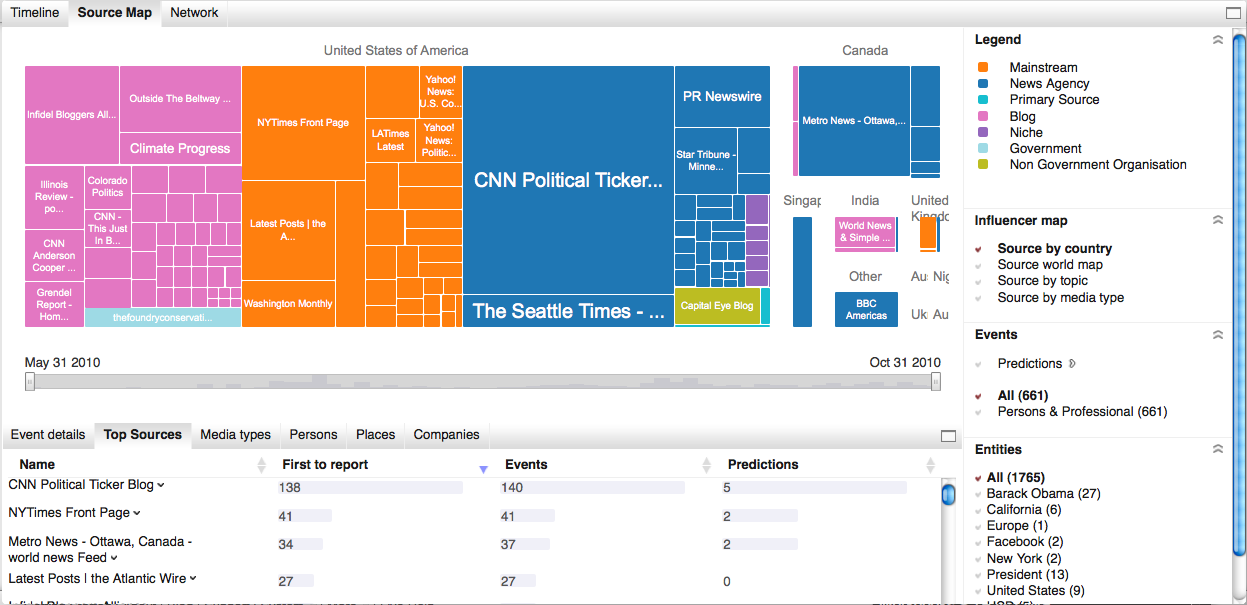
And then a map of sources including quotations about OWS:
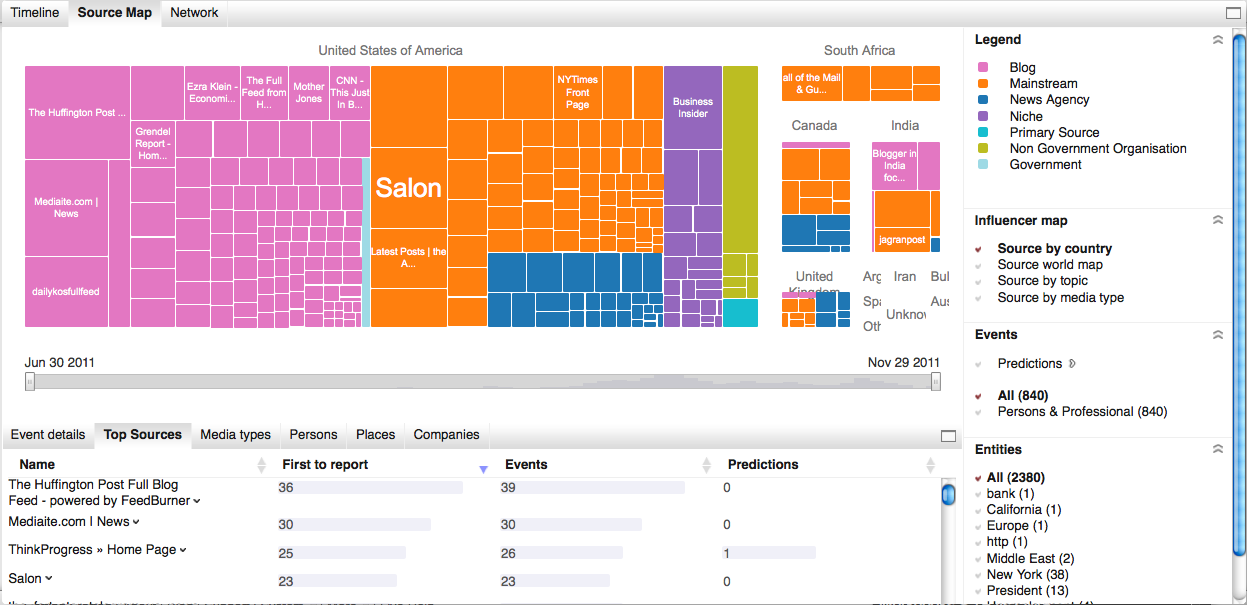
- Both movements are receiving mostly U.S.-based coverage although OWS has been mentioned in statements reported by sources in our index from 35 different countries.
- The most prominent sources for the Tea Party and Occupy Wall Street during these time frames? CNN Political Ticker and the New York Times for the Tea Party; Huffington Post and Mediaite for OWS.
What's to make of all this? Well, regarding the distributed network for OWS versus the politicized network for the Tea Party, it likely boils down to "Occupy" being seen as extremely risky to embrace politically while the Tea Party, certainly a civil movement, has been leveraged politically since its beginnings. The network also shows the online media has yet to succeed in identifying leadership, at least at the highest level. Adbusters co-founder Kalle Lasn, who created the initial call to action for Occupy Wall Street, figures quietly in influence over the broader discussion of OWS.
There's no doubt that the period of time sampled can affect the findings in an experiment such as this one. Smith used data from November 15, when OWS was being evicted from Zuccotti Park in a highly emotional event that drove media momentum while the Tea Party was experiencing what should be considered a pretty typical day when you look at its momentum for November.
Lastly, it's also interesting to consider the contrasting nature of each movement during the periods measured. OWS has been volatile with events emerging suddenly in distributed locations with sometimes very different individuals playing a part. The Tea Party appears the opposite with a steady, driving message leading up to the 2010 elections. The latter scenario requires individuals, as seen with the focal points in the Tea Party network above, to continue forging the movement's message its followers and the media; the former only needs an occasional event that emotionally affects the masses.
